
0
+
Google Reviews

0
+
4.7 (2080 Ratings)
Data Science and Machine Learning with Python is a field of study and practice that combines data analysis, statistical modeling, and machine learning techniques using the Python programming language. Data Science and Machine Learning with Python involve the use of Python programming along with statistical analysis and machine learning techniques to extract insights, build predictive models, and solve complex data-related problems across various domains, including finance, healthcare, marketing, and more.


Curriculum Designed by Experts
Course content summary -Introduction to Data Science with Python
Python Essentials
NumPy, pandas, scikit-learn, stat models, nltk
Accessing/Importing And Exporting Data Using Python Modules
Data Manipulation – Cleansing – Munging using python modules
Data Analysis – Visualization Using Python
Introduction to Statistics
Introduction to Predictive Modelling
Data Exploration For Modelling
Data Preparation
Segmentation: Solving Segmentation Problems
Linear Regression: Solving Regression Problems
Logistic Regression : Solving Classification Problems
Time Series Forecasting : Solving Forecasting Problems
Machine Learning
Unsupervised Learning : Segmentation
Supervised Learning :- Decision Trees
Supervised Learning :- Ensemble Learning
Supervised Learning :- Artificial Neural Network – ANN
Supervised Learning :- Support Vector Machines
Supervised Learning :-KNN
Supervised Learning :- Naive Bayes
Text Mining And Analytics
You should be able to demonstrate these skills
This course does not require a prior quantitative or mathematics background. It starts by introducing basic concepts such as the mean, median mode etc. and eventually covers all aspects of an analytics (or) data science career from analysing and preparing raw data to visualizing your findings. If you’re a programmer or a fresh graduate looking to switch into an exciting new career track, or a data analyst looking to make the transition into the tech industry – this course will teach you the basic to Advance techniques used by real-world industry data scientists.
Course Contains
Introduction to Data Science with Python
Outline for this course
Introduction to Data Science with Python
Python Essentials
Accessing/Importing And Exporting Data Using Python Modules
Data Manipulation – Cleansing – Munging using python modules
Data Analysis – Visualization Using Python
Introduction to Statistics
Introduction to Predictive Modelling
Data Exploration For Modelling
Data Preparation
Segmentation: Solving Segmentation Problems
Linear Regression: Solving Regression Problems
Logistic Regression : Solving Classification Problems
Unsupervised Learning : Segmentation
Supervised Learning :- Decision Trees
Time Series Forecasting : Solving Forecasting Problems
Machine Learning : Predictive Modelling
Supervised Learning :- Ensemble Learning
Supervised Learning :- Artificial Neural Network – ANN
Supervised Learning :- Support Vector Machines
Supervised Learning :-KNN
Supervised Learning :- Naive Bayes
Text Mining And Analytics
Audience for this course
Data science and machine learning are among the fastest-growing fields in technology. Acquiring skills in these areas can significantly enhance your employability and open up diverse career opportunities in industries such as healthcare, finance, e-commerce, and more.
Data science equips you with the tools and techniques to extract valuable insights from large volumes of data. By applying machine learning algorithms, you can uncover patterns, trends, and correlations in data that can inform strategic decision-making and drive business growth.
Machine learning enables predictive modeling, allowing organizations to forecast future outcomes based on historical data. This capability is valuable for tasks such as sales forecasting, demand planning, risk management, and predictive maintenance.
Data science and machine learning have applications across various domains, including healthcare, finance, marketing, cybersecurity, manufacturing, and more. Acquiring proficiency in these areas provides you with transferable skills that are applicable across different industries and sectors.
Machine learning can automate repetitive tasks and streamline processes in various domains, leading to increased efficiency and productivity. By leveraging machine learning algorithms, you can automate data preprocessing, feature engineering, model training, and evaluation, thereby freeing up time for more complex tasks
Data science and machine learning enable advanced analytics capabilities, including sentiment analysis, natural language processing (NLP), image recognition, and anomaly detection. These techniques can provide valuable insights and solutions for tasks such as customer sentiment analysis, text classification, image classification, and fraud detection.
Organizations that leverage data science and machine learning effectively gain a competitive edge by leveraging data-driven insights to innovate, optimize processes, and deliver better products and services to customers. By mastering these skills, you can help organizations stay ahead of the competition and drive innovation.
Machine learning powers personalized experiences and recommendation systems in various applications, including e-commerce, streaming platforms, social media, and online advertising. By understanding machine learning techniques, you can design and implement effective recommendation algorithms to enhance user engagement and satisfaction.
Data scientists and machine learning engineers are in high demand and command competitive salaries. By learning data science with machine learning, you can position yourself for lucrative career opportunities and continuous career growth as these fields continue to evolve and expand.
Radical Technologies is the leading IT certification institute in Pune, offering a wide range of globally recognized certifications across various domains. With expert trainers and comprehensive course materials, it ensures that students gain in-depth knowledge and hands-on experience to excel in their careers. The institute’s certification programs are tailored to meet industry standards, helping professionals enhance their skillsets and boost their career prospects. From cloud technologies to data science, Radical Technologies covers it all, empowering individuals to stay ahead in the ever-evolving tech landscape. Achieve your professional goals with certifications that matter.
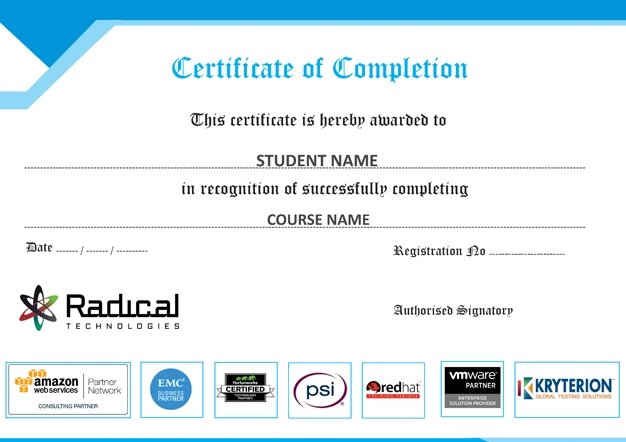


At Radical Technologies, we are committed to your success beyond the classroom. Our 100% Job Assistance program ensures that you are not only equipped with industry-relevant skills but also guided through the job placement process. With personalized resume building, interview preparation, and access to our extensive network of hiring partners, we help you take the next step confidently into your IT career. Join us and let your journey to a successful future begin with the right support.
At Radical Technologies, we ensure you’re ready to shine in any interview. Our comprehensive Interview Preparation program includes mock interviews, expert feedback, and tailored coaching sessions to build your confidence. Learn how to effectively communicate your skills, handle technical questions, and make a lasting impression on potential employers. With our guidance, you’ll walk into your interviews prepared and poised for success.
At Radical Technologies, we believe that a strong professional profile is key to standing out in the competitive IT industry. Our Profile Building services are designed to highlight your unique skills and experiences, crafting a resume and LinkedIn profile that resonate with employers. From tailored advice on showcasing your strengths to tips on optimizing your online presence, we provide the tools you need to make a lasting impression. Let us help you build a profile that opens doors to your dream career.

Infrastructure Provisioning
Implementing automated infrastructure provisioning and configuration management using Ansible. This may include setting up servers, networking devices, and other infrastructure components using playbooks and roles.

Applications Deployment
Automating the deployment and orchestration of applications across development, testing, and production environments. This could involve deploying web servers, databases. middleware, and other application components using Ansible

Continuous Integration
Integrating Ansible into CI/CD pipelines to automate software. build, test, and deployment processes. This may include automating the creation of build artifacts, running tests, and deploying applications to various environments.

(DATA SCIENCE)Antrixsh teaches us lots of things in easy way and very understanding. Radical Technologies is systematic planed institute in pune.
Antrixsh is best trainer for data science. He has very practical approach. Radical Technology is best institute for BigData and DataScience professional course in Pune.
Antrixsh is really a great tutor when it comes to Data Science teaching. Being from a different platform, i have learned a lot from him and the time and money is really worth when it comes to learning Data Science from Antrixsh Sir. …
Attended Data Science batch in Radical aundh and must say that Antrixsh is the best trainer/ mentor I have ever met. He made things simple but beyond that he provided us with many scenarios to work on. One should not expect to become a …
Best Data Science class in entire Pune. Thanks to Antrixsh sir for the excellent teaching.
Course content for Data Science was good but forming a batch takes time.
Good institutions and trainer for Data science course. Special thanks to Antrixsh
Good learning experience at Radical Technologis, Aundh. Thanks to Antrixsh sir for Data Science. He is having good knowledge of content with real time examples explanation which is really helpful to understand.
Got good knowledge of hadoop and data science. Thanks for helping us understand the course in very interactive and easy way.
I did Big data and Data Science program here with Antriksh sir. All materials is provided like setup documents, ppts, dataset, assignments. It is helpful in switching career to big data. But yes need to spend time to get expert in it
I did big data and data science program here with Antrixsh sir. It was really helpful to start your career in this field. All materials and guidance was good. But yes finally if you have to be proficient you needs practice over that...... 😊 …
I did the data science course with Radical. The course covered some topics of Bigdata and few topics on data science. This course gives you the basic foundations required for starting your journey in the data science field.
I had a very nice experience with the course Data-Science at Radical Technologies - Aundh. Antrixsh is a very good trainer and presents things in a very lucid and …
I had enrolled for data science and machine learning course conducted by instructor Antrixsh Gupta. He's a great teacher and always available to answer the doubts. I was really a novice in this field but with the guidance of Antrixsh sir I was able to make a career transition into this field.
I had pursued Big_Data-Data Science course from Radical Tech, Aundh, Pune for Jan 2018 weekend batch. It was indeed a great learning. It is good that Radical Tech offers Data Science training program comprising most of the modules at …
I have completed the training for Data Science under the guidance of Antrixsh Gupta sir.All my queries are answered and the best thing about the class is that, real world examples are discussed and that helps us to relate how data science works in real world problem.
I just completed my Data Science training, my mentor was Antrixsh Gupta there, he is a very patient and knowledgeable tutor, He came extremely prepared which impressed me, He was always available to answer any questions we had, apart from the class, many times he took us to Lunch and Dinner after the classes, would recommend to anyone.
It was a good learning experience learning data science mentored by Antarixsh Gupta sir. Practical examples along with detailed explanation are taught in class which make concepts even clearer.
It was great experience in learning new things with "Antarixsh Gupta" Sir. His knowledge on Data Science and guidance has changed our thoughts and gave us opportunity to learn new things. Well I was fortunate enough to start my career as …
It was very good experience with Radical. I have done Data Science course under the guidance of Antrixsh Gupta. Antrixsh Sir is technically one the best coach i have meet till date. …
Trainer Antrixsh is very good for data science. He has very practical approach. Needless to say Radicals is best institute for any professional courses in Pune.
Attended training on Data Science with R & python in radical technologies Hinjewadi and had a really good experience. The trainers here have sound knowledge on the subjects and keep themselves updated with the latest trends in the market. …
I can say that it's one of the best Insistute to learn phython, datascience, machine learning. I have completed phython with datascience in radical technologies hinjewadi. In simple word I will say he is just perfect trainer for phython …
I have attended datascience and Google cloud from radical technologies Hinjewadi,trainers are very knowledgeable ,even you are not in to IT.they covers topics in such a ease that everyone take well.The infrastructure also good.
I have joined radical technologies hinjewadi for datascience with python +machine learning and R. Trainer explained all the concepts clearly. The training was completely based on real time scenario and they gave one life project also . I …








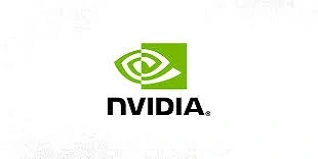
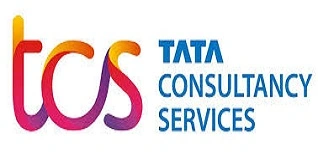



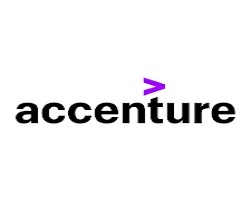
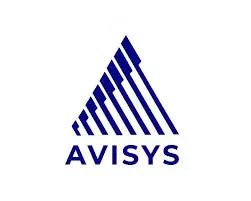


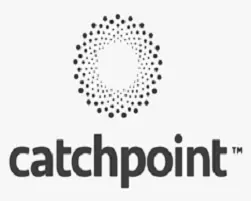








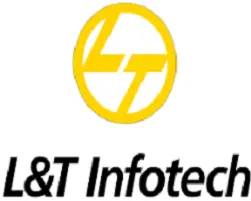
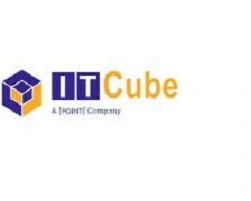


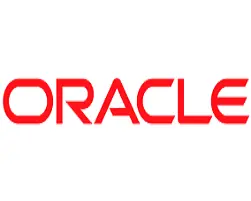



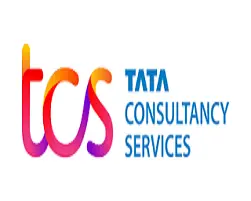




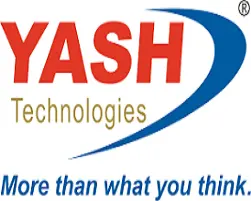
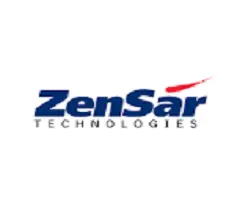
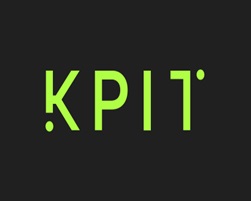

Radical Technologies stands out for its comprehensive Data Science Course in Pune. With expert instructors, hands-on projects, and a focus on real-world applications, our training is designed to empower aspiring data scientists.
Absolutely! Our Data Science Course in Pune caters to all levels of expertise, including beginners. We provide a structured curriculum that starts with fundamentals and progresses to advanced topics, ensuring a comfortable learning experience for everyone.
Absolutely! Our Data Science Course in Pune caters to all levels of expertise, including beginners. We provide a structured curriculum that starts with fundamentals and progresses to advanced topics, ensuring a comfortable learning experience for everyone.
Yes, the Data Science Certification awarded upon completion of our course is recognized in the industry. It adds value to your resume and enhances your credibility as a skilled data science professional.
Our Online Data Science Training in Pune is designed for remote learners, offering flexibility without compromising on the quality of education. Live sessions, interactive discussions, and hands-on projects ensure an engaging online learning experience.
Yes, we provide Job Placement Assistance to help you transition smoothly into the industry. We also offer a Job Placement Guarantee for the right candidates who successfully complete our Data Science Course in Pune.
Certainly! Our Python Data Science Course is integrated into the Data Science curriculum, but we also offer it as a standalone course for those specifically interested in mastering Python for data science applications.
For detailed information on the Data Science Course Duration and Fees in Pune, please visit our website or contact our admissions team for personalized assistance.
Yes, we offer a specialized course that explores the convergence of Data Science and AI. This advanced program is designed for those seeking expertise at the intersection of these two cutting-edge fields.
Our Data Science Courses are designed to accommodate the schedules of working professionals. With flexible timings and online options, our courses provide a convenient way for working individuals to upskill and advance their careers in data science.
Ambegaon Budruk | Aundh | Baner | Bavdhan Khurd | Bavdhan Budruk | Balewadi | Shivajinagar | Bibvewadi | Bhugaon | Bhukum | Dhankawadi | Dhanori | Dhayari | Erandwane | Fursungi | Ghorpadi | Hadapsar | Hingne Khurd | Karve Nagar | Kalas | Katraj | Khadki | Kharadi | Kondhwa | Koregaon Park | Kothrud | Lohagaon | Manjri | Markal | Mohammed Wadi | Mundhwa | Nanded | Parvati (Parvati Hill) | Panmala | Pashan | Pirangut | Shivane | Sus | Undri | Vishrantwadi | Vitthalwadi | Vadgaon Khurd | Vadgaon Budruk | Vadgaon Sheri | Wagholi | Wanwadi | Warje | Yerwada | Akurdi | Bhosari | Chakan | Charholi Budruk | Chikhli | Chimbali | Chinchwad | Dapodi | Dehu Road | Dighi | Dudulgaon | Hinjawadi | Kalewadi | Kasarwadi | Maan | Moshi | Phugewadi | Pimple Gurav | Pimple Nilakh | Pimple Saudagar | Pimpri | Ravet | Rahatani | Sangvi | Talawade | Tathawade | Thergaon | Wakad |
I had an amazing experience with this service. The team was incredibly supportive and attentive to my needs. The quality of the work exceeded my expectations. I would highly recommend this to anyone looking for reliable and professional service."
I had an amazing experience with this service. The team was incredibly supportive and attentive to my needs. The quality of the work exceeded my expectations. I would highly recommend this to anyone looking for reliable and professional service."
I had an amazing experience with this service. The team was incredibly supportive and attentive to my needs. The quality of the work exceeded my expectations. I would highly recommend this to anyone looking for reliable and professional service."
I had an amazing experience with this service. The team was incredibly supportive and attentive to my needs. The quality of the work exceeded my expectations. I would highly recommend this to anyone looking for reliable and professional service."
I had an amazing experience with this service. The team was incredibly supportive and attentive to my needs. The quality of the work exceeded my expectations. I would highly recommend this to anyone looking for reliable and professional service."
Data Science and Machine Learning have become crucial components in the tech industry, driving innovation and transforming how businesses operate. A certification in Data Science & Machine Learning with Python not only validates your expertise in these fields but also equips you with the skills needed to tackle real-world problems using Python—a powerful and versatile programming language known for its simplicity and vast library support.
This certification program is meticulously designed to cater to both beginners and professionals seeking to deepen their understanding of Data Science and Machine Learning. The course covers a wide array of topics, ensuring a holistic learning experience:
This certification is ideal for:
To earn the Data Science & Machine Learning with Python Certification, participants must:
Data Science and Machine Learning have become integral to various industries, driving innovation and efficiency. Their applications are diverse, ranging from enhancing business processes to developing cutting-edge technologies that shape our daily lives. Here’s a detailed look at some of the most impactful applications:
1. Healthcare
2. Finance
3. Retail
4. Manufacturing
5. Transportation
6. Marketing
7. Energy
8. Entertainment
9. Education
10. Natural Language Processing (NLP)
Unlock the world of data with Radical Technologies’ comprehensive Data Science Course in Pune. Our Data Science Classes cover the spectrum, providing hands-on training for aspiring data scientists. Whether you’re a beginner or a seasoned professional, our Data Scientist Course in Pune caters to all levels of expertise.

(Our Team will call you to discuss the Fees)
